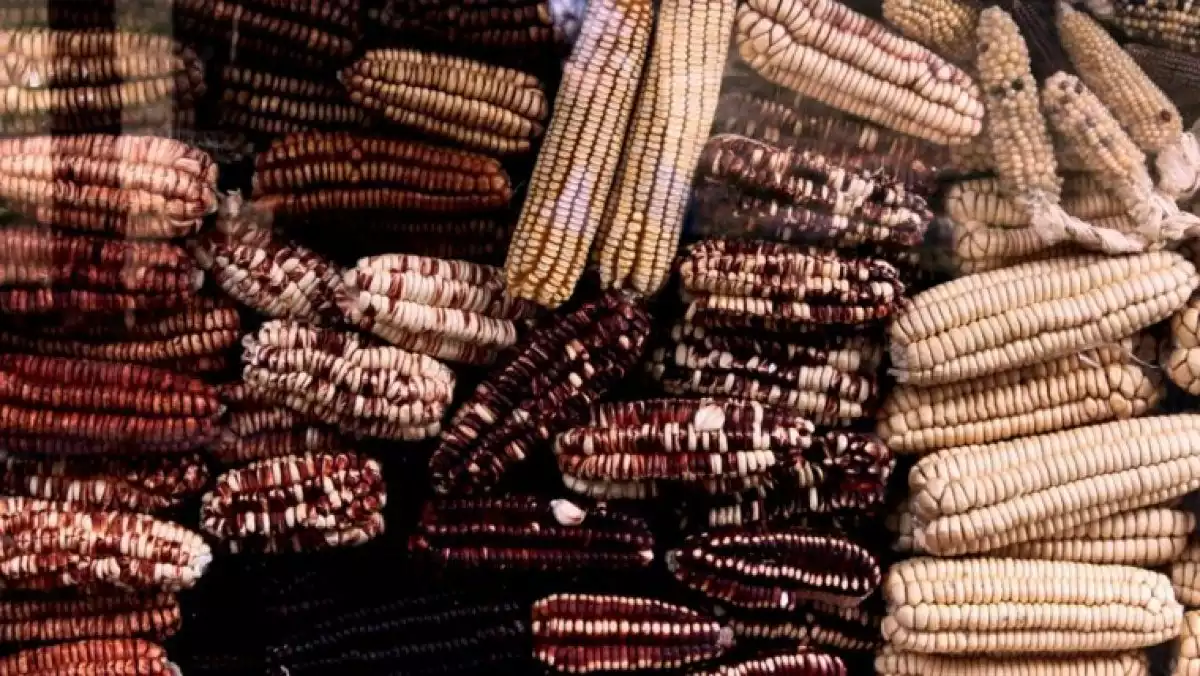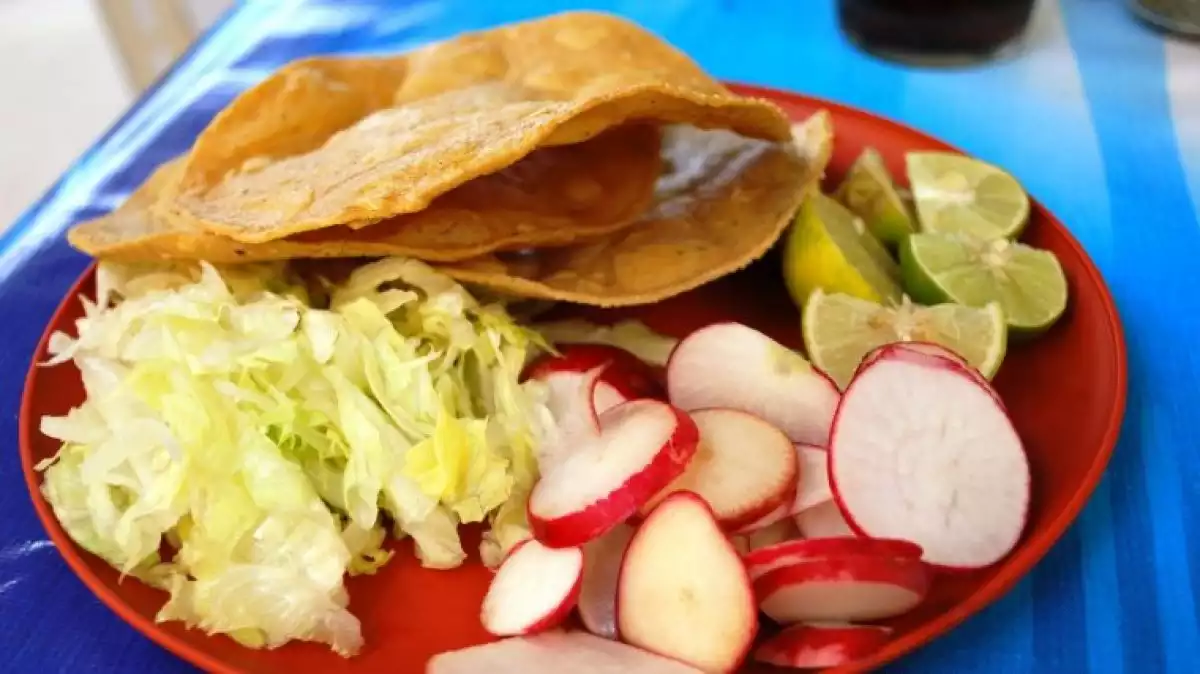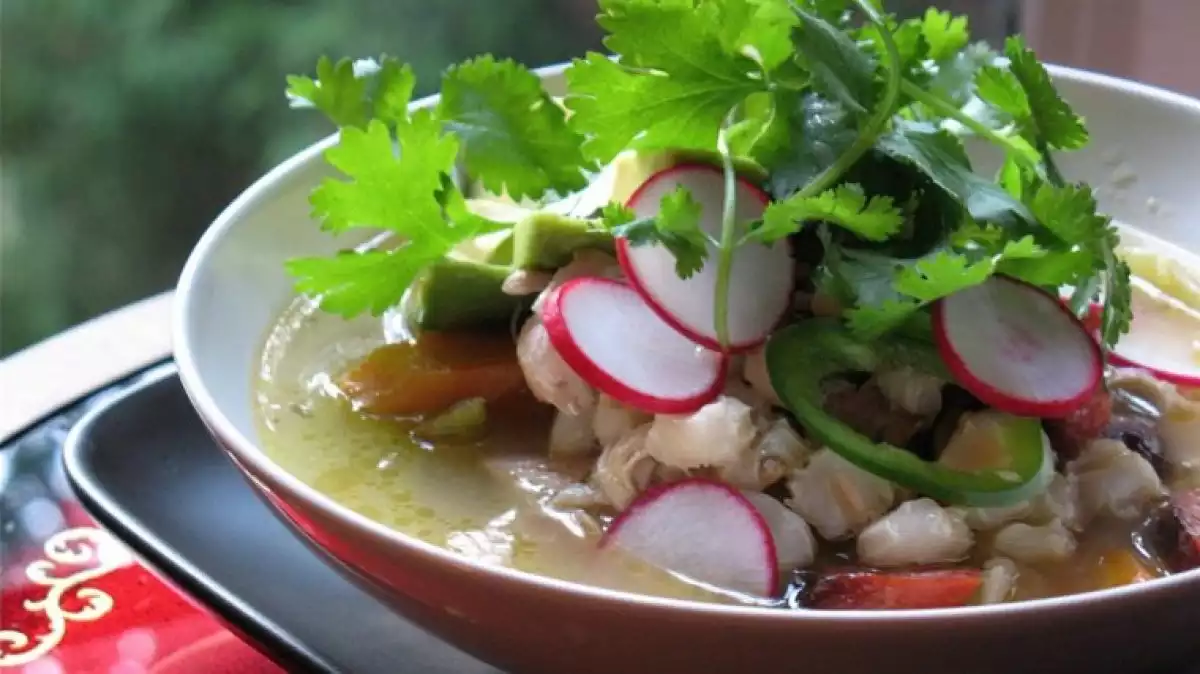Pozole is one of the most delicious and popular dishes in Mexican cuisine. The main ingredients are corn, chile peppers, pork or chicken meat and the recipe comes in one of the three colors of the Mexican flag: green, white, or red. We will have a look at how to make pozole, what its history is, and what nutrients and calories it contains.
Origin of pozole
The origin of pozole dates back to the discovery and use of corn, a staple food in Mexican gastronomy since the pre-Hispanic era. A broth of boiled hominy (dried maize kernels) is the base for all three types of pozole - green, white, or red. Mexican writer and gastronomy specialist, Adolfo Castañón, tells the story of how the meat used in the pozole dish was initially human.
After the prisoners were killed by the ancient Americans, they would send a skinned thigh to king Moctezuma. The leftover meat was divided among the people present, and it was eaten in the house of the person who had captured the prisoner. After cooking the meat, they would add the boiled hominy kernels and broth and called it “tlacatlaolli.”
From tlacatlaolli to pozole
A sacred food, prepared by the Aztecs in honor of king Xipe Totec, pozole is part of the many pre-Hispanic recipes that use corn. The grain used back in that time was called cacahuazintle, an old variety of white dent maize, and it symbolized the divine flesh.
With time, the dish tlacatlaolliwas replaced by pozolli, which means "foamy" and "to cook corn." Castañón explains that once the Spanish invasion took place and cannibalism was banned, human meat was replaced by pork and subsequently chicken meat. We have since come to know this recipe as pozole.
Nowadays, this ancient dish has been adapted, and it includes seafood, among many other ingredients. Pozole is a typical dish served all over the world; the only difference is the popularity of each type of pozole - in some regions, red pozole is more common, while in others green or white pozole is more widespread.

How to make pozole
Although it may look like an intricate recipe because of the number of ingredients it contains, pozole is not difficult to make. We need to follow the same instructions for either green, white, or red pozole. The color of the dish is given by the type of tomato used, so the only ingredient you need to change is the tomatoes.
Ingredients:
This recipe is intended for approximately 15 people.
1 kg. hominy ( produced from dried maize kernels)
4 guajillo chili (deveined)
2 garlic cloves
½ onion
Chicken breast
Two pork legs
For red pozole: 2 red tomatoes
For green pozole: 5 green tomatoes
For white pozole: without tomatoes
5 radishes
½ lettuce
Oregano - to taste
Thyme - to taste
Chile de árbol powder - to taste
10 lemons
Tortillas (fried corn tortillas)
Preparation method:
First, boil the hominy with the chicken breast and pork legs in 2 liters of water for 30 minutes, adding salt to taste. In a different pot, boil the tomatoes with the guajillo chili with 2 cups of water for 10 minutes. Strain the chilly base and put it in a blender together with the garlic and onion. Once the ingredients are blended, fry them in a big pot for 2 minutes, using a tablespoon of olive oil.
Next, you need to remove the chicken breast from the pot it was in, shred it with your hands into long pieces and put it back on top of the hominy and pork legs. Add the other pot of chili mix on top and let boil for 10 minutes. Finally, add the powdered spices and serve in a soup bowl adding the radishes, chopped lettuce, and tortillas. Enjoy!

Seafood pozole red recipe
The different pozole recipes vary depending on the Mexican region where they are cooked as well as on individual taste. Aside from the pork or chicken meat, some places cook it with seafood which is why we have listed below a delicious seafood pozole recipe.
Ingredients:
This recipe is intended for approximately 4 people.
3 cups hominy
500 g. red tomatoes
1 garlic clove chopped
¼ onion chopped
1 spring of cilantro
Salt and pepper - to taste
Fish fillets - to taste
Shrimp- to taste
Clams - to taste
Preparation method:
The first stages are the same as in the regular pozole; we need to boil the hominy in plenty of water for approximately 30 minutes. In a different pot, cook the tomatoes, garlic, onion, and cilantro for a few minutes and then blend until you have a sauce-like consistency. Place in a bigger pot, on medium fire.
Add the boiled hominy and season with salt and pepper to taste. Leave to simmer for 10 minutes and finally add the fish and seafood. Serve in a soup bowl with other pozole cold ingredients - radishes, chopped lettuce, lemon, and tortillas.
How many calories are in pozole?
Although it may seem like a spicy dish for those who are not used to it, pozole has an abundance of nutrients that have many health benefits. Pozole is high in carbohydrates, proteins, and vitamin B7. Other nutrients include iron, potassium, magnesium, sodium, and zinc. The calorie intake tends to rise once we mix pozole with other ingredients, which is a common practice.
Current nutrition programmes estimate that a plate of pozole can have up to 780 calories, although depending on the ingredients used it can vary between 220 and 235 calories. To reduce the number of calories contained, the recommendation is to consume only one cup and a half of hominy with 60 grams of meat and vegetables. Take out the pork legs from the recipe and try to avoid eating the tortillas or the mayonnaise that sometimes comes with the dish.
- This article about "Pozole" was originally published in Spanish in Viviendo La Salud
References:
Castañón, A. (2010). Tránsito de la cocina mexicana en la historia. Cinco estaciones gastronómicas: mole, pozole, tamal, tortilla y chile relleno. Pp. 22-54. En Maeseneer, R. y Collard, P. (Eds.). Saberes y sabores en México y el Caribe. Colección hispánica de Flandes y Países Bajos: Amsterdam.
Flores, J., (2004). Breve historia de la comida Mexicana. Debolsillo: México.
Vázquez, M., Ramos, S., Salinas, Y., Cervantes, J.E. (2014). Pozole: situación actual y calidad nutricional. Pp. 113-163. En Aguilera, M., Reynoso, R., Gómez, C.A., Uresti, R. y Ramírez, J. (Eds.). Los alimentos en México y su relación con la salud. PyV: México.
